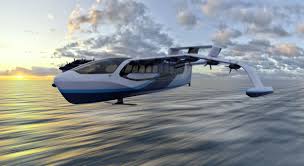
Breaking News
 7 Ancient Crops We Forgot How to Grow..And How to Grow Them Today
7 Ancient Crops We Forgot How to Grow..And How to Grow Them Today
 Know what jurisdiction you are in and know the Bible.
Know what jurisdiction you are in and know the Bible.
 Plant Once, Harvest Forever: Why Don't You Know About It?
Plant Once, Harvest Forever: Why Don't You Know About It?
The Thanksgiving Heritage Of America
Top Tech News
 First totally synthetic human brain model has been realized
First totally synthetic human brain model has been realized
 Mach-23 potato gun to shoot satellites into space
Mach-23 potato gun to shoot satellites into space
 Blue Origin Will Increase New Glenn Thrust 15-25% and Make Rocket Bigger
Blue Origin Will Increase New Glenn Thrust 15-25% and Make Rocket Bigger
 Pennsylvania Bill – 'Jetsons Act' – Aims To Green-Light Flying Cars
Pennsylvania Bill – 'Jetsons Act' – Aims To Green-Light Flying Cars
 New Gel Regrows Dental Enamel–Which Humans Cannot Do–and Could Revolutionize Tooth Care
New Gel Regrows Dental Enamel–Which Humans Cannot Do–and Could Revolutionize Tooth Care
 Researchers want to drop lab grown brains into video games
Researchers want to drop lab grown brains into video games
 Scientists achieve breakthrough in Quantum satellite uplink
Scientists achieve breakthrough in Quantum satellite uplink
 Blue Origin New Glenn 2 Next Launch and How Many Launches in 2026 and 2027
Blue Origin New Glenn 2 Next Launch and How Many Launches in 2026 and 2027
 China's thorium reactor aims to fuse power and parity
China's thorium reactor aims to fuse power and parity
 Ancient way to create penicillin, a medicine from ancient era
Ancient way to create penicillin, a medicine from ancient era
First electric seaglider finally hits the water with real passengers

The seaglider takes advantage of what's called the wing-in-ground-effect – where a winged vehicle experiences less aerodynamic drag when it's close to the surface it's flying above, like the ground or a water body.
With its numerous propellers mounted on a blown wing, the Regent Viceroy Seaglider promises to carry 12 passengers and two crew (or 3,500 lb/1,600 kg of cargo) over at least 180 miles (300 km) at a 180 mph (300 km/h) cruise speed, flying at ultra-low altitudes of just 30-60 ft (9-18 m) above the water.
The company won approval from the US Coast Guard to run tests of a full-size prototype of the Viceroy last September, and it's finally pulled it off. As the label implies, this is the same size as the upcoming production version, measuring 55 ft (16.75 m) long with a 65 ft (19.8 m) wingspan. Regent notes it can simply float on the hull, foil above the waves on its hydrofoils, and fly in ground effect slightly above the surface of the water.
This test follows years of work developing the seaglider since the company was founded in 2020. It took two years to build and fly a quarter-scale prototype; this full-size one got out on the water after months of testing of its various onboard systems, including motors, batteries, and vehicle control software.
With that, Regent is closer to making good on its investors' US$90-million bet to bring electric high-speed coastal transport to market. The company says it's already landed orders totaling more than $9 billion from around the world, and believes its vessels will ferry tourists between tropical islands, transport cargo, and assist in emergency response. It's also partnering with the US Marine Corps to explore maritime defense and logistics applications.
Regent also has a large manufacturing facility in the works in Rhode Island, which it hopes to inaugurate next year. That means we're not too far off from low-flying electric-boat-plane-hydrofoil hybrids hitting the seas, like almost nothing before them.



